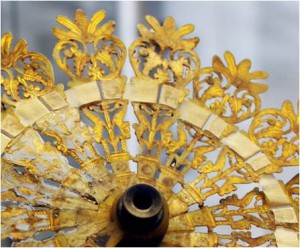 Fans are so much more than fashionable accessories: They are useful for flirting, can cool heated cheeks or hide an unladylike emotion. In the wake of the Napoleonic War, their usefulness was boosted beyond the known limit when fans were made for spying, i.e. discretely observing the surrounding or other persons. I found some examples of these extraordinary devices when I visited the exhibition “Waterloo: Life & Times” of the Fan Museum in Greenwich, UK.
Fans are so much more than fashionable accessories: They are useful for flirting, can cool heated cheeks or hide an unladylike emotion. In the wake of the Napoleonic War, their usefulness was boosted beyond the known limit when fans were made for spying, i.e. discretely observing the surrounding or other persons. I found some examples of these extraordinary devices when I visited the exhibition “Waterloo: Life & Times” of the Fan Museum in Greenwich, UK.
Dolls as toys and as mirror of fashion
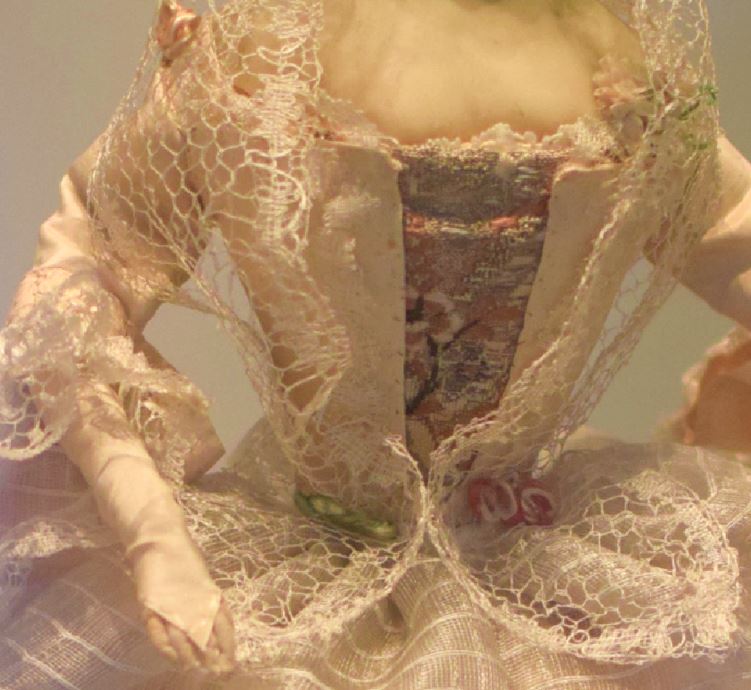
Dolls have always been around. As a marketable toy for children, they became more and more elaborate in the 18th century. Dolls for the wealthy were elegantly dressed, including ruffles, panniers, rich lace and tiny shoes with buckles. True ambassadors of fashion were the so-called Pandora dolls, early mini-mannequins used by dressmakers to send their designs to customers.
Continue readingThe Unrivalled Beauty of the Hand-held Fan in the Romantic Age
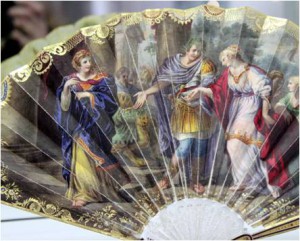 Sit back and enjoy photos of beautiful or interesting fans made between 1770 and 1815. Occasionally a plot bunny hops in, inspiring you to make use of fans in your Regency Novel.
Sit back and enjoy photos of beautiful or interesting fans made between 1770 and 1815. Occasionally a plot bunny hops in, inspiring you to make use of fans in your Regency Novel.
You can click on each photo to enlarge it. Continue reading
Fresh ideas for the fashionable head: the capote
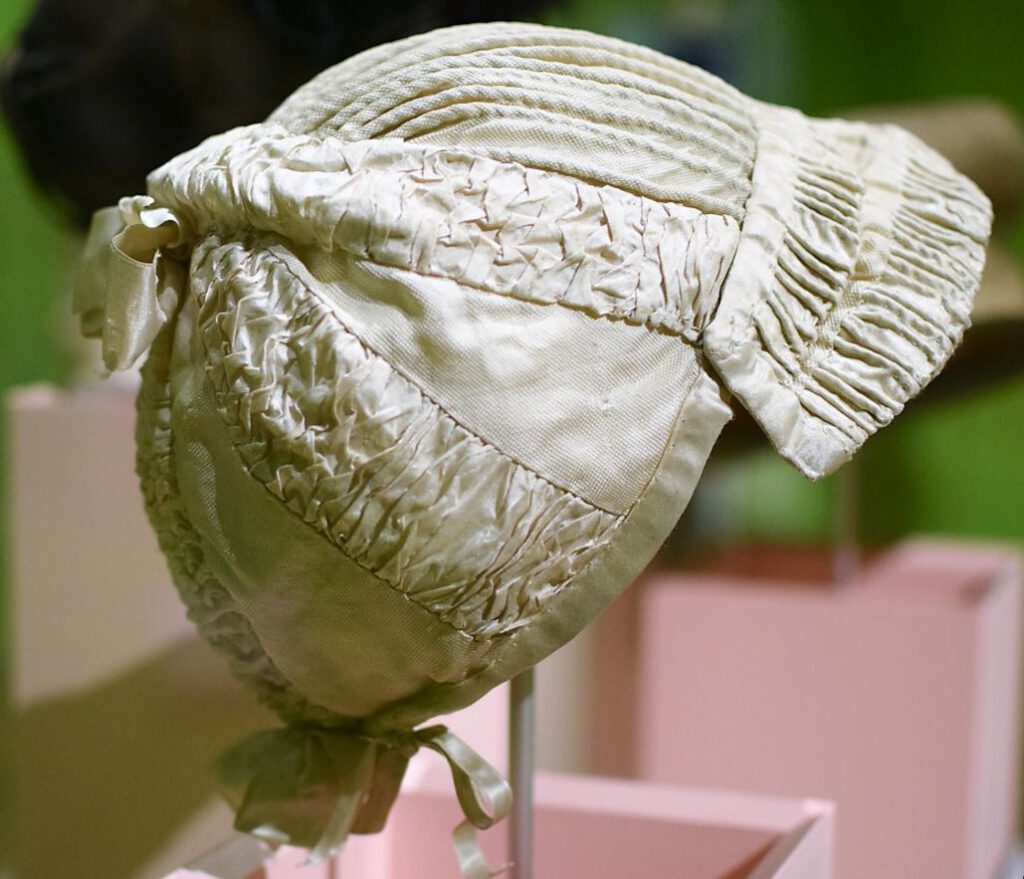
A new form of hat vied for ladies’ favour around the turn of the 19th century: the capote. The soft, cap-like hat was first created around the late 1790ies. By 1804, the capote was quite commonly worn by women and girls. It enjoyed popularity until about 1815.
Continue readingYou are not really dressed until you are wearing a hat

Dear time travelling gentleman on the way to the 18th century, please make sure to take with you one thing: a hat!
In the 18th century, a hat is not only useful in bad weather, and it is more than a fashion accessory. A hat indicates your role in society. Without a hat you are a nobody.
Follow me to a brief introduction to the history of 18th century hats. We make sure you pick the correct one for each period, and we also find out about hat etiquette.
Ladies’ Hats made from Horsehair
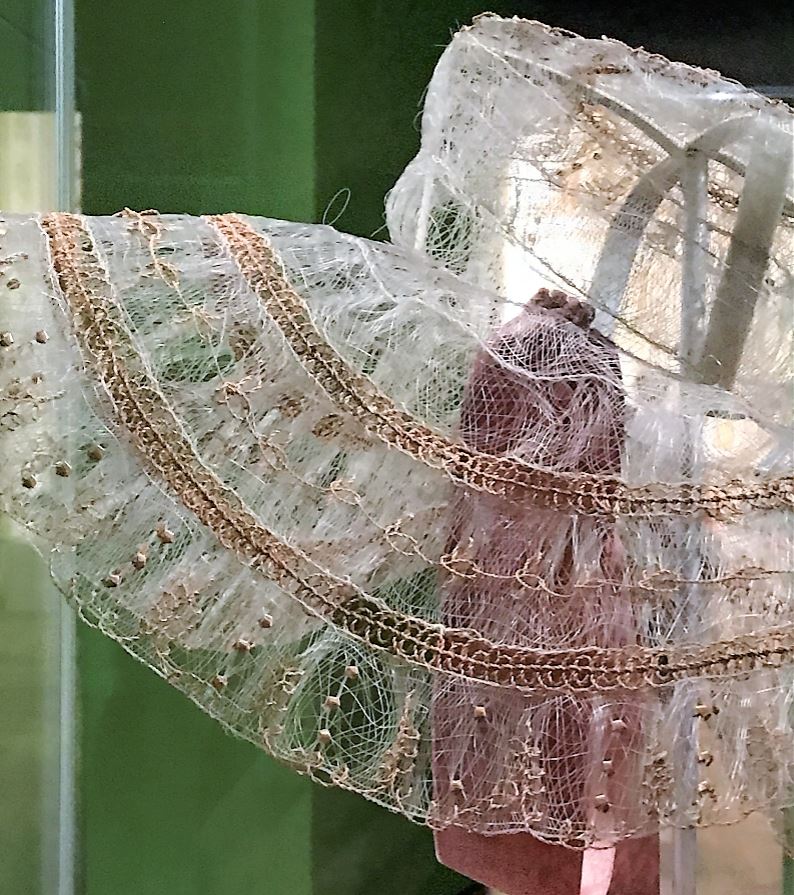
During the Regency period, horses seemed to be everywhere: They were indispensable partners for work, transportation, warfare, sport – and even for lifestyle and fashion. Horsehair from manes and tails was used for brushes, wigs and string instruments, and it was proceeded into haircloth. Haircloth was a great fabric for upholstery or for stiffening crinolines and the front panels of a suit. All these usages relied on the robustness of the material. But did you know that delicate ladies’ hats were made of horsehair, too?
Continue readingSign your name across my card
How to use a dance card in the Romantic Age

For a young lady few things would be more satisfying than being a sought-after dancing partner at a glamourous ball. But if she was in constant demand, how would she keep track of the partners engaging her for the waltz or the cotillion later in the evening? And how would a gentleman secure a dance with her?
Keeping track of the gentlemen who had promised a dance in the course of the evening was done – on the Continent – with the assistance of a so called ‘carnet de bal‘ (a dance card). A gentleman would ask a lady to write down his name on the card a for a specific dance. These small and often precious carnets de bal were very popular in France and Austria throughout the 18th century.
In Britain, the dance card became fashionable at around the turn of the 18th century. The carnet de bal initially was often less elaborate than the Continental model.
Go Greek: the hairnet as a fashionable head-dress of Empire Style Fashion

Hairnets were popular for hairdressing in various historical periods. Today, we most often associate them with the ornate hairstyles of the Tudor period. Did you know that the hairnet became fashionable for a couple of years during the Regency period?
Continue readingObjects of Interest: Shoes!
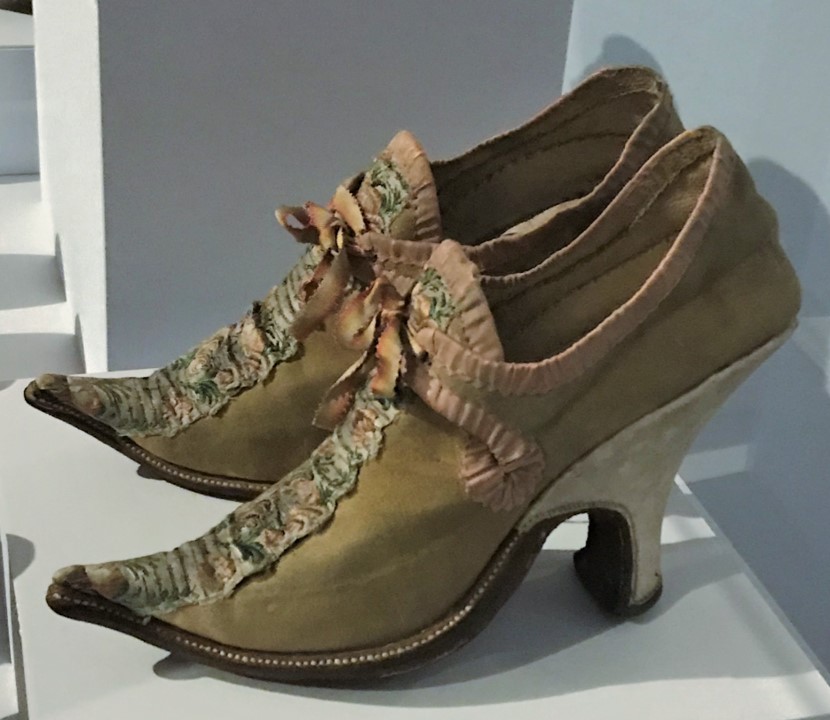 At first glance, 18th century shoes aren’t very different from today’s shoes – though they are, of course, more delicate and ornate. At a closer look however, many features of shoes we take for granted today were invented only after 1830. Enjoy some amazing facts about shoes, shoemaking, and photos of lovely shoes.
At first glance, 18th century shoes aren’t very different from today’s shoes – though they are, of course, more delicate and ornate. At a closer look however, many features of shoes we take for granted today were invented only after 1830. Enjoy some amazing facts about shoes, shoemaking, and photos of lovely shoes.
Object of interest: a souvenir from Venice
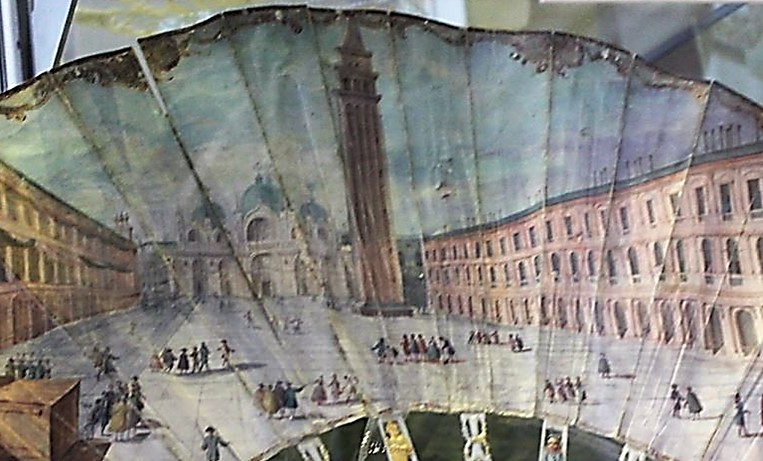
In the 18th century, Venice was among the top destinations of the Grand Tour. The city was experiencing a period of peace, and economy and arts flourished. This attracted rich British tourists. They indulged their sense of luxury, spent their days at leisure at Caffè Florian or Caffé Lavena, and enjoyed the opera, gambling, dancing, fireworks and spectacles. Buying art was also high on the list of things to do, and paintings with views of the City by sought-after artists such as Antonio Canal (Canaletto) made an excellent souvenir. Of course, pretty trifles were taken back to Britain as well. These could, e.g., be hand-held fans. Let’s have a closer look at one of these beautiful items.
Continue reading